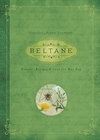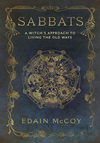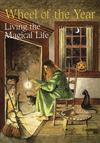May Day Celebrations Around the World

England
The festivities now associated with the celebration of May reached their height in England during the Middle Ages. They were heavily influenced by Italian forms of celebration dating back to the time of ancient Rome. On the first day of May, English villagers arose at daybreak to wander the countryside gathering blossoming flowers and branches.
A towering, tall Maypole was set up on the village green, which was typically the center of the village. The Maypole was made of the trunk of a tall tree, such as birch, and was decorated with bright flowers of the field. In celebration of the season, the villagers danced and sang around the Maypole, accompanied by the music of a piper. Often the morris dance was performed by dancers wearing colorful costumes upon which hung several small bells. The fairest maiden of the village was chosen to be the Queen of the May. In some regions of England a May King was also chosen. The Queen and King of May led the village dancers and ruled over the May Day festivities. During the Elizabethan period the king and queen were called Robin Hood and Maid Marian.
Maypoles were usually set up for the day in small towns and villages. In larger places, such as London, a permanent Maypole was erected. Eventually the Puritans spoke out against the Maypole and the revels of May as heathen practices. For a time they succeeded in eliminating the celebration of May, but the festivities returned within a few decades and continue in many English villages today.
An old English custom, still observed in some areas, involves a house-to-house visit by children, who bring flowers in exchange for pennies. Once the pennies are collected, the children toss them into a wishing well.
Switzerland
In Switzerland a small May pine tree is often placed under a girl's window to encourage health, development, and fertility.
Germany
Here it is the custom for boys to secretly plant May trees in front of the windows of their sweethearts. This is said to ensure fidelity and the return of love.
Greece
The acknowledgment of the May season begins with a custom linked to ancient omens. Greek children set out early in the morning to search for the first swallow of spring. When the bird is located, the children go from door to door, singing songs of spring. The neighbors in turn offer special treats to the children such as fruits, nuts, and cakes.
Czechoslovakia
Like the German custom, at night boys place Maypoles by their sweetheart's windows.
France
Here the month of May is sacred to the Virgin Mary. Virginal young girls serve as May queens and lead processions in honor of the Virgin Mary, carrying a statue of the virgin crowned with flowers. Cows appear in French May Day festivals, possibly as the remnant of a forgotten mother image or symbol of fertility and nurturing. Bundles of flowers are tied and draped around the cow's tail as they are led along in street parades. To touch one of the cows is believed to bring good luck, and everyone makes the attempt. An old custom that remains is to drink warm milk directly from the cow on May Day morning. This is said to bring good fortune throughout the coming year.
United States
Although May Day celebrations waned with the passing of the nineteenth century, a resurgence has been building. This seems to have been reborn on college campuses and at Renaissance fairs. Dancing and singing around a Maypole tied with colorful streamers or ribbons is no longer as uncommon as it was even twenty years ago. For May Day celebrations, a May Queen is chosen, but the King of May is not commonly chosen. An old custom also returning involves children constructing paper May baskets to hang on the doorknobs of relatives and friends. The children ring doorbells and run away, leaving their flowers as a surprise.
In Hawaii, May Day is called Lei Day. On this day a lei is given, with the giver putting it around the receiver's neck and accompanying it with the traditional kiss. Lei Day began in 1928 and is mixed with traditional Hawaiian celebrations complete with pageants, a Lei Queen, and her court.
Italy
Although modern May festivals in Italy are associated with Mary and other saints, their history dates back to ancient Roman paganism. The people of ancient Rome honored Maia and Flora, the goddesses of flowers and springtime. Their statues were wreathed in garlands and carried in a procession of singers and dancers past a sacred, blossom-bedecked tree, the forerunner of the modern Maypole. Later, festivals of this kind spread to other lands conquered by the Romans. In may regions of modern Italy, boys often serenade their sweethearts on May Day.
Excerpted from Beltane, by Raven Grimassi

About Raven Grimassi
Related Products



is subject to certain Terms and Conditions